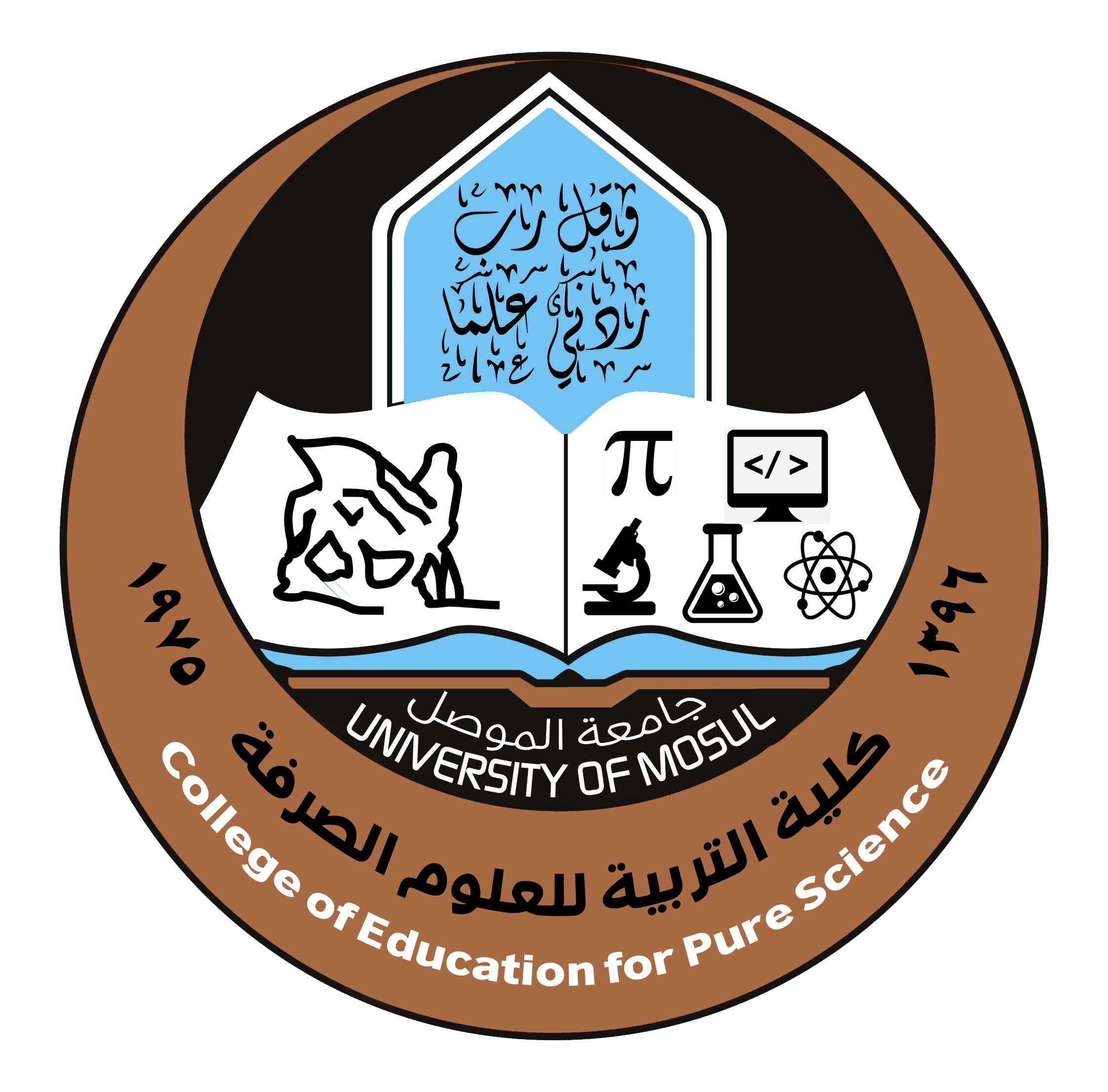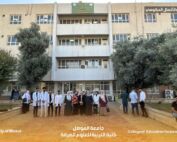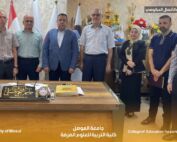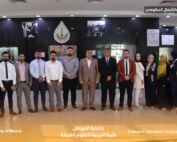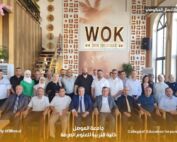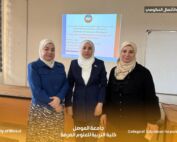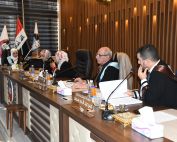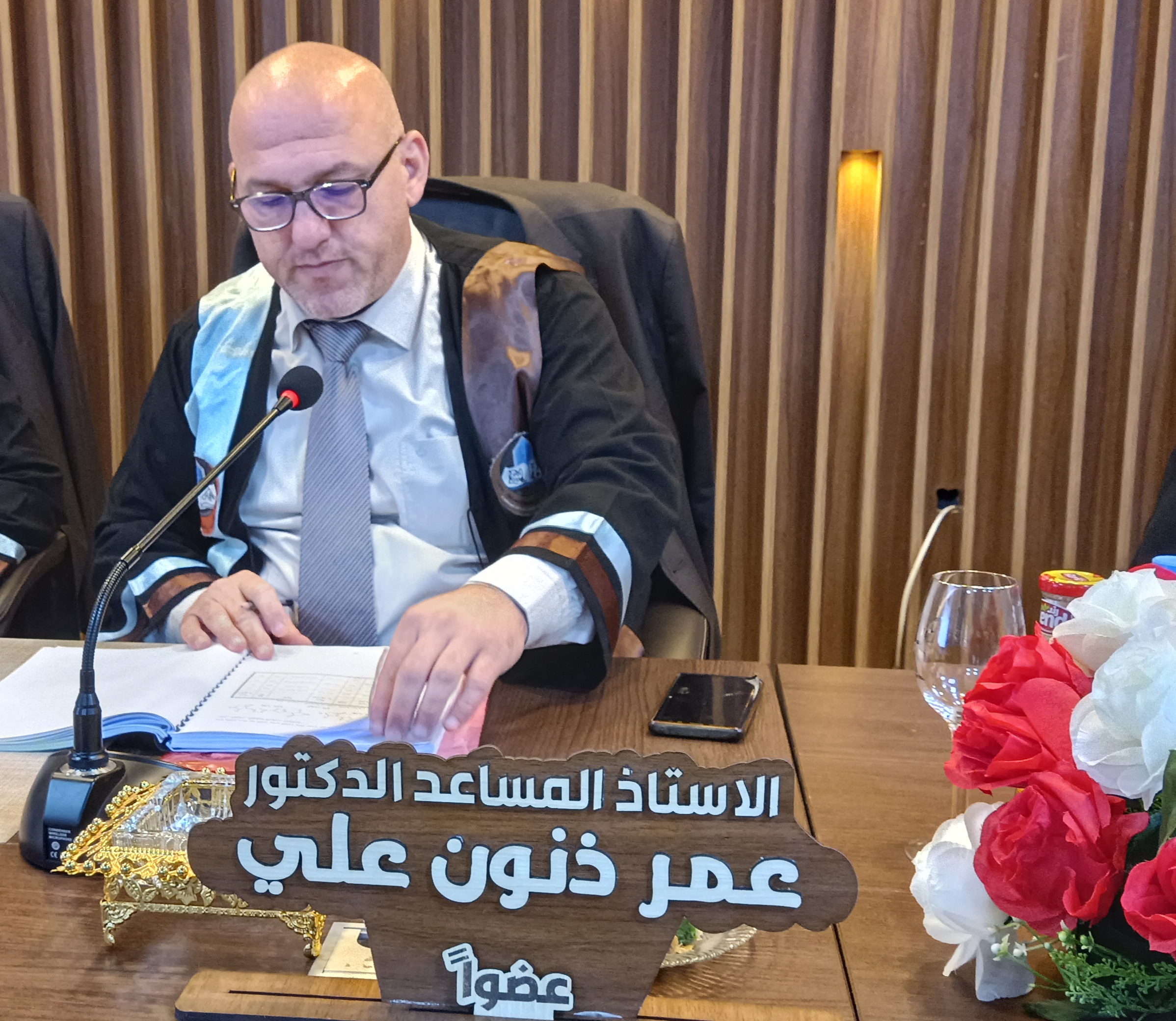12 May، 2022
The M.Sc. Thesis Viva – Department of Physics
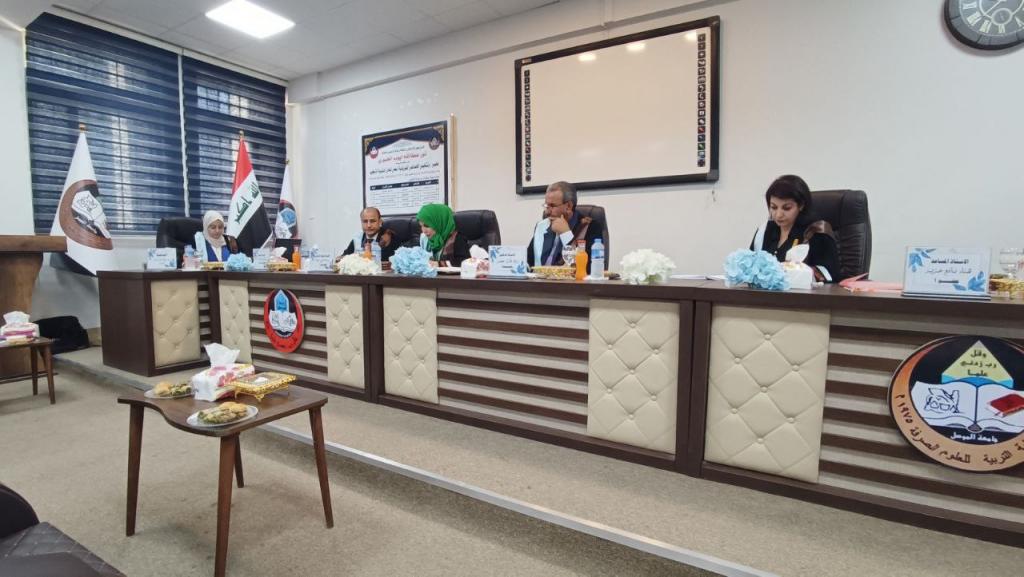
Master’s Thesis Viva in the College of Education for Pure Science entitled “Preparation and characterization of the physical properties of some metallic nanostructures”The College of Education for Pure Science, University of Mosul, has done the master’s thesis viva entitled “Preparation and characterization of the physical properties of some metallic nanostructures”,On Thursday, May 12, 2022, the college staff including the respected Dean of the College, Assistant Professor Dr. Qais Ismail Ibrahim, the Honorable Scientific Associate and Administrative Associate, the Honorable Head of the Department of physics, and a number of the college’s teachers were attended the viva.This study, presented by the Msc. student Noor Atallah Ayoub Al- Jubbori in the Department of physics, In this work, the physical method that is pulsed laser ablation in liquid (PLAL)using to prepared silver nanoparticles, this method unconventional, fast, clean, long-lasting and non-toxic method, it is prepared by a Q-switched, 1064 Nd: YAG pulsed laser applying an energy (300 and 500) mJ and the number of pulses (50, 100, 150 and 200) pulse and laser ablation was performed at room temperature of metal immersed in deionized water. After obtaining the silver nanoscale solutions, a part of the solutions was irradiated with gamma ray by 60Co radioactive source, and the irradiation of the silver nanoscale solutions was at doses (4kGy). The size and surface morphology were studied by means of transmission electron microscopy (TEM), the volumetric distribution of the nanoparticles and the examination of the nanoscale solutions were done by means of UV-Vis spectroscopy. The results of TEM showed that at (300, 500) of laser energy, spherical nanoparticles were obtained and by calculating the diameters of many nanoparticles using Imagej software, then the size distribution was calculated using Origin pro 8.5 program, and the results showed that the diameter distribution range was between (4.41 nm-42.87 nm). It was roughly concentrated at (18.52)nm for silver and between (9.95 nm-67.57 nm). It was roughly concentrated at (37.62)nm for copper , but at 500mJ the diameter distribution range was between (3.12 nm-26.60 nm). It was roughly concentrated at (12.10)nm for silver and between (8.08 nm-84.81 nm). It was roughly concentrated at (26.72)nm for copper.The results of UV-Vis spectroscopy showed that the surface plasmon resonance (SPR) and the optical density were higher value for higher pulses and higher laser energy but the irradiated solutions had a lower SPR value than the non-irradiated laser energy. From the absorption spectrum as well, the energy gap was calculated by the Tauc method, and the energy gap showed an increase in its value with the increase in the laser energy, but it decreased with the higher gamma dose of the same laser energy. This indicates that increasing the laser power and applying the gamma rays lead to a change in the nanoparticle density, numbers, shape, and size. The silver and copper nano powder was also obtained from an external source and examined with a scanning electron microscope (FESEM), X-ray diffraction (XRD) and X-ray energy dispersion spectroscopy (EDS). Where the results of (FESEM) showed that the nanoparticles are spherical, and by calculating the diameters many nanoparticles, the diameter distribution ranges between (6.55nm-54.09nm) and concentrated approximately in (20.08) nm for silver, and the results of (XRD) for the nanoparticles showed that there are four peaks in the corners (ᵒ38.2763), (ᵒ44.4084), (ᵒ64.7056) and (ᵒ77.5220), which correspond to levels (111), (200), (220) and (311) respectively, and the results also showed that the nano powder is largely identical to the results of the international card. The number is (00-004-0783) for silver and that the direction of the crystal plane in the direction (111) is dominant. The results of (XRD) for copper nano powder showed that the crystal system is cubic and polycrystalline and there are nine peaks at the angles (º29.6923), (ᵒ36.5584), (ᵒ38.5584), (ᵒ42.438), (ᵒ43.4442)and ( ᵒ50.5678), (˚52.626), (ᵒ61.4593), and (ᵒ73.5948) which correspond to the levels (110), (111), (200), (111), (200), (220), (311), (220), (222) respectively, and it largely matches the results of the two international cards numbered (00-001-1241) and (01-077-0199) for copper and copper oxide, respectively, and the direction of the crystal plane in the direction (111) is dominant. EDS of silver nano powder revealed that the presence of pure silver copper nanopowder, the presence of pure copper (Cu 38.14%) was the component element. Principal compared to carbon (11.31%) and oxide (35.46%).The discussion committee was chaired by Prof. Dr .Ziad Tariq Khudair/College of Science /Diyala University and the membership of Dr. Rawe Naji Nayef / College of Education For Pure Sciences / University of Mosul, Ass. Prof. Hana Nafie Aziz /College of Education ./ AL-Hamdaniya University and under the supervision and membership of Prof .Dr Mushtaq Abed Dawood Al- Jubbori/ College of Education For Pure Sciences / University of Mosul.
